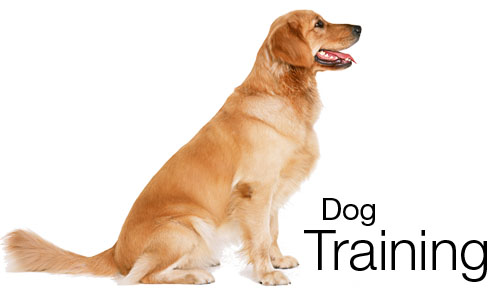Dogs Need Leaders
Written by Dr. Laurie Green
You may think it's obvious that you are your dog's leader. . . you make the decisions and you pay the bills, don't you? But if your dog is ill-mannered or worse, he doesn't recognize your leadership, even if you are the one who buys the dog food and snaps the leash on his collar for walks. Dogs are not just four-legged, hairy little people. They speak a different language than we do, a language based on body posture and behavior. They don't know about bills. They do know about announcing the arrival of strangers, guarding against invaders, and monitoring their group's social life (who sleeps where, who strokes whom, who gets fed first, etc.) These are the responsibilities of a canine leader. If you are having trouble with your dog in any of these areas -- does he jump on guests, beg at the table or insist on sleeping on the furniture?--then he thinks he is the leader!
To your dog, a leader is someone who makes the following decisions:
When do I eat?
Where do I sleep?
When do I go outside?
Who goes through the door first?
When do I come in?
When will petting start? When will petting stop?
When do I play?
What will I play?
When does playtime end?
What shall I bark at? How long will I bark?
What will I investigate on a walk?
The more of these decisions you make, the more of a leader you are to your dog. The more he can count on your leadership, the less he has to worry about. As you assert your leadership, your dog will become less anxious, less annoying, and very possibly less aggressive.
Reclaiming Your Leadership
How, then, do you act like a leader your dog can recognize? First, a few things not to do. You do not establish leadership by yelling at your dog, and you do not establish leadership by spanking him, hitting him with a rolled-up newspaper, or rolling him onto his back in the dreadfully dangerous "alpha rollover." You do it by teaching your dog to perform a deferential behavior, and insisting he show his deference to you at all those crucial decision-making times listed above.
What the heck is a "deferential behavior"?
"SIT." Yes, commanding your dog to sit at the right time will go a long way towards establishing your leadership. The behavior modification concept involved here is sometimes called "Nothing in Life is Free," because by sitting on command your dog earns the interaction that follows.
So that you do not need to remember which circumstances are the ones that your dog considers leadership issues, the rule for establishing leadership is as follows:
Your dog must sit promptly at your command to earn anything and everything he wants or needs, from now on, for the rest of his life.
If your dog does not sit reliably on your command, see the section on "Teaching Your Dog to Sit." Once he has mastered "sit," use it! He'll be sitting on command many times a day. He'll be sitting so much that pretty soon he'll sit before you even tell him to. . . and that's great, for two reasons. First, he is voluntarily showing deference to you, and that means you' re becoming more of a leader in his eyes. And second, a dog that is sitting is a dog that isn't getting into trouble!
As your efforts to reclaim your leadership take root, several things may happen. Sometimes things get worse before they get better. Your dog may challenge you as you assert yourself, or he may escalate his obnoxious behaviors, tempting you to yell and hit. Don't be misled by these setbacks into thinking you're making things worse! They will get better if you stick with the program!
A few tips for dealing with the setbacks:
Ignore your dog's attempts at leadership, or turn them to your advantage. Let's say your dog insists on being petted while you're trying to relax in front of the TV. Will he go away if you ignore him? Probably not--most dogs have learned that if you're being ignored, just make yourself more of a nuisance until you get the attention you crave. (So what if it's a curse and a slap? Negative attention is still attention!) So at his very first attempt to get your hand on his head, withdraw whatever body part is touching him and command him to sit. When he does, reward him by petting him briefly, then dismiss him. You're the one who inadvertently taught him to be a pest--now you can teach him to ask to be petted, and to be petted only as a reward for obeying your command.
If you need more physical control to get your dog to obey your commands, use a Gentle Leader head collar with a light line dangling from it so you can instantly have control of your dog without risk of getting nipped. Talk to your veterinarian about how to properly use this humane and effective training aid.

